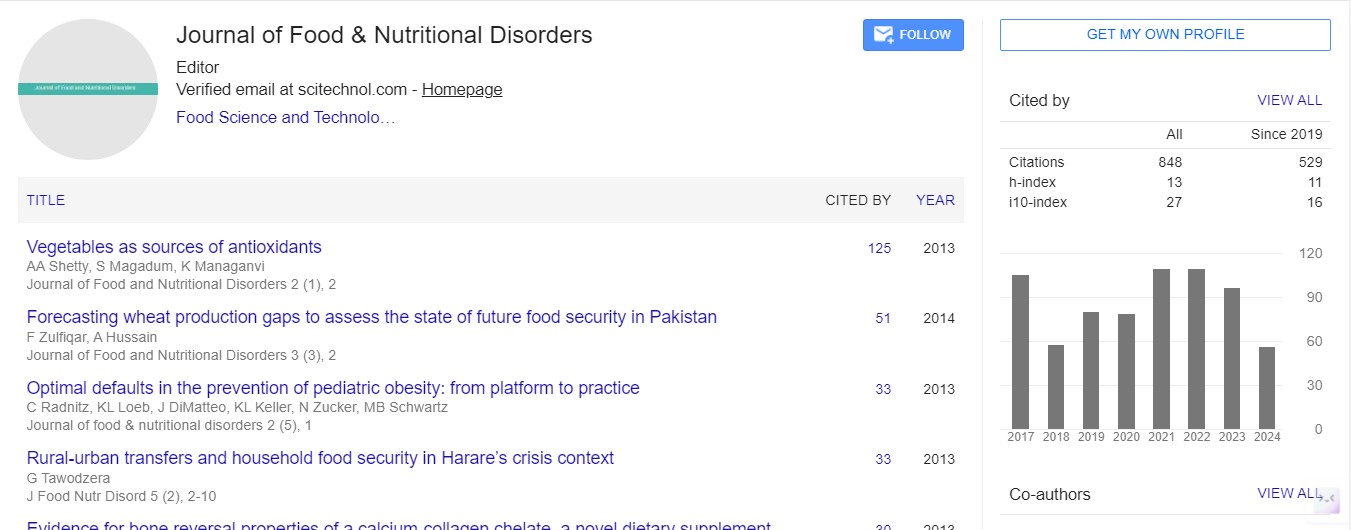Dietary intake of Tunisian adult population to cobalt
Monia Bouktif and Nesrine Gharbi
University of Carthage, Tunisia
National Agency of Environmental and Sanitary of the Product, Tunisia
: J Food Nutr Disor
Abstract
Background: Cobalt is a natural element. The earth’s crust contains 0.0023% cobalt. It is usually associated with other metals such as Copper, Nickel, Manganese and Arsenic. Cobalt is found in the form of Cobalamin (vitamin B12), in animal products such as meat, fish, poultry, seafood, milk, cheese and eggs and in inorganic form in plants. Exposure is primarily oral, in humans and oral absorption of cobalt and depends on the form of the chemical element, its dose and the nutritional status of the person exposed to it. In this study cobalt was quantified in a single food group. The daily mean intake arranged from to 2.21 10-3 in the lower bound to 0.11 mg/day/body weight in upper bound. The first food contributor to the mean intake in lower bound is spices and the first food contributor to the mean intake in upper bound is water. The daily mean intake at P95 arranged from to 5.37 10-33 in the lower bound to 0.161 mg/day/ body weight in upper bound.
Methodology & Theoretical Orientation: Cobalt has been searched on 42 food group samples represented with 71 food samples representative of the Tunisian diet. The sampling and laboratory analyzes were done in accredited laboratory. The risk assessment and risk characterization of the dietary intake of Tunisian population of cobalt were done according to GEM’S food methodology recommended by international bodies (FAO, WHO) with three steps of risk analysis (an intake estimation, a hazard characterization and risk characterization). Nutrient reference values chosen for the assessment of the adequacy of cobalt intakes of the Tunisian population: BNR of 2.4 μg / d for the age group from 19 to over 65 years (WHO 2004). TRV of 1.6 μg / kg bw / d is the lower limit of the TDI interval for toxic effects (as determined by ANSES 2011) due to the absence of BNM.
Findings: ANCSEP and FAO Funding
Conclusion & Significance: The analysis demonstrated that 84.5% of the results are below the LOD, 14.08% of the results are between the LOD and the LOQ, one sample has a result more than the LOQ. In terms of population, the mean daily intake of cobalt and the estimated P5 for the Tunisian population globally covers the BNR by WHO (92% to 4378%). In terms of individuals, the mean daily intake of cobalt does not cover the BNR (from 53% (low level) to 0% (high level) of individuals with cobalt AJMT below 80% of BNR).
Biography
E-mail: bouktifm@yahoo.fr
 Spanish
Spanish  Chinese
Chinese  Russian
Russian  German
German  French
French  Japanese
Japanese  Portuguese
Portuguese  Hindi
Hindi 
